Perhaps the thing keeping Primary Colors from achieving true greatness is pretty simple: it’s practically a fossilized record of the Clinton era in microcosm. It also had the unfortunate bit of luck to be released in 1998, shortly after the Monica Lewinsky scandal became a national soap opera, late-night punch line and eternal footnote to Clinton’s presidency. But it’s not all bad, Primary Colors is smart, cynical and twisted enough to actually examine the lesser-of-two-evils dichotomy that presides in American politics.
No film reaching for such lofty ambitions of tone or character could ever walk away as a perfectly realized piece of work, and Primary Colors is often messy, reaching into absurdist’s territory in many instances, yet still somehow striking a fairly believable tone. Luckily, you’ve got Mike Nichols steering this ship, and he’s always a great captain of ambitious and emotionally complicated waters. He delivers another of his well-oiled, slick and efficient films, but it’s missing some of the messiness of Who’s Afraid of Virginia Woolf? or The Graduate.
Great thing though that he’s assembled a group of actors that keeps things interesting, emerging as a collage of different and unique voices working in unison. Small parts are played by Allison Janney, Tony Shalhoub, Diane Ladd, Robert Klein, Rob Reiner and in a last minute supporting role, Larry Hagman who creates a very rich and detailed character out of limited screen time. Most people only know Hagman from Dallas, and his sensitive work here was a revelation to me.
Adrian Lester is our surrogate – a man who must believe in the dream, chooses to believe in the dream and despite all of the major warning signs, and has chosen to believe in this particular candidate at this time. His journey from head-in-the-sand upstart to battle-scarred campaigner is pitch-perfect. Just as great, if not better, is Kathy Bates as the manic-depressive problem-solver/dirt-suppressor. She brings a lot of energy and fun into many of her earlier scenes before transforming into the wounded, battered soul of the film at the end. It’s great work. Emma Thompson goes beyond an easy impersonation of Hilary Clinton and creates her own character, borrowing liberally from Hilary’s well-known hardness and steely exterior, yet crafting a more deferential and supportive interior.
You know, Primary Colors would have turned out much better if they had cast someone other than John Travolta in the main role. Sure, on the outside he looks the part and has the charisma to pull it off, but there’s nothing intellectual about him as an actor. And he relies too heavily on easy imitation instead of digging deep to try and form a real character or try to understand this man. One of Clinton’s greatest gifts as a politician is that he can project the outward appearance of actually caring, whether or not he does is entirely questionable. Another great asset of his was the ability to look like he actually believed in the crap he spewed out. Travolta cannot mimic or even seem to fathom these two tricks, and he frequently comes across as dumb, horny and an obvious snake-oil salesman. (And for the record, I love President Clinton. I think he did some great stuff during his time in Office.)
You know, perhaps Primary Colors could use a second look. Sure, the last act tips the film away from sardonic, black humor and into easy moralizing, but everything before that is wildly entertaining. Sure it’s uneven, but show me any film about the political system that isn’t. There’s no right, wrong or even easy way to tackle such a behemoth of a subject matter. But you gotta respect those who have tried.
Primary Colors
 Posted : 11 years, 9 months ago on 22 July 2013 08:26
(A review of Primary Colors)
Posted : 11 years, 9 months ago on 22 July 2013 08:26
(A review of Primary Colors) 0 comments, Reply to this entry
0 comments, Reply to this entry
True Grit
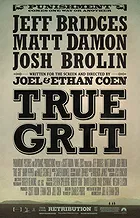 Posted : 11 years, 9 months ago on 22 July 2013 08:26
(A review of True Grit)
Posted : 11 years, 9 months ago on 22 July 2013 08:26
(A review of True Grit)A truly great western essentially boils down to one simplistic thing: a good character study. For all of its grand vistas and gorgeous Technicolor cinematography, The Searchers boils down to one man’s journey to find his niece and grapple with his racist and xenophobic feelings. Johnny Guitar is a titanic battle of wills between two strong women, and High Noon deconstructs the image of the western hero into something more naked and ugly, a human being crying out for help. And so True Grit gives us two central characters who exemplify the titular traits and surround them with colorful supporting roles. It’s one hell of a movie.
Putting aside the wealth of great characters and fabulous acting for a moment, let us discuss Roger Deakins’ cinematography. It is a glorious thing that somehow didn’t win him an Oscar. We are often used to seeing the Old West in John Ford films, in which it looks magnificent, awe-inspiring and vastly cinematic. Not so here. Oh sure, it still looks vastly cinematic, but it also looks frequently harsh and stark. The frame is filled with a vast terrain that looks easy to get yourself lost in, both physically and mentally. It’s glorious work that puts us in the correct frame right away.
The Coen Brothers were wise to place the primary focus of the film on Mattie Ross, the prepubescent girl made of steel. Having never read the novel, I’m going to go out on a limb and assume that she is also the primary focus there, and it’s easy to see why. It’s a great part, her gaze remains steady at all times, she’s smart, an excellent negotiator and yet still tender beneath it all. Hailee Steinfeld’s performance doesn’t announce a new star so much as thunder one down from the mountain tops. Although why she was placed in the Best Supporting Actress category is anyone’s guess as she is the lead of the film.
No matter, her co-lead, Rooster Cogburn, is another engaging character. I’ve never seen the original, and I’m sure it’s a fine piece of work on John Wayne’s part, but the difference between the two performances probably boils down to this: movie star acting and actor acting. Jeff Bridges gives his Cogburn an underlining sense of decency, but it’s wrapped up in a grizzled, even-handed, slightly cantankerous cowboy. His unique sense of justice has little to do with civilized law and more to do with gut-instinct and acute vigilantism than anything else. It’s a great part, and Bridges plays the hell out of it.
These two are ably supported by a gallery of supporting players who remind you of how diversely talented and great they are as actors. Barry Pepper is particularly underrated as an actor, and his lack of vanity is startling. His villain looks like a man who has lived on the outskirts of society for so long that he has come to resemble a pure animalistic humanoid. Josh Brolin is Tom Chaney, the man who drives Mattie’s singular mission for revenge against the man who killed her father, and he does a lot with limited time. His Chaney is pure villainy, none too bright, driven by bloodlust and greed more than anything else. And Matt Damon appears as LaBeouf, a Texas Ranger who is introduced as sidekick and comedic relief material but takes one more dimensions as Damon plays him with an ominous undercurrent. It’s great work, combing roguish charm and levity in equal measures.
And what great dialog they have been blessed with. The humor is black, and many scenes require the actors to fire off their lines as rapidly as Cary Grant and Rosalind Russell in His Girl Friday. Take for instance the scene where Mattie outsmarts a horse trader. Or LaBeouf’s introduction to Mattie which flirts with his possible sexual violence against her before she goes about giving him, and anyone who gets in her way, a verbal tongue lashing. There’s many things which make up the greatness of True Grit, but the dialog may just be the crowning glory of it all.
Sure, they didn’t exactly reinvent the wheel on this one, but the Coen Bros. made an incredibly solid western. They wisely put character and dialog front-and-center, and stood back while Steinfeld and Bridges ignited the fireworks. Not just one of the better movies of 2010, True Grit may just go down as a rare instance of the remake surpassing the original.
Putting aside the wealth of great characters and fabulous acting for a moment, let us discuss Roger Deakins’ cinematography. It is a glorious thing that somehow didn’t win him an Oscar. We are often used to seeing the Old West in John Ford films, in which it looks magnificent, awe-inspiring and vastly cinematic. Not so here. Oh sure, it still looks vastly cinematic, but it also looks frequently harsh and stark. The frame is filled with a vast terrain that looks easy to get yourself lost in, both physically and mentally. It’s glorious work that puts us in the correct frame right away.
The Coen Brothers were wise to place the primary focus of the film on Mattie Ross, the prepubescent girl made of steel. Having never read the novel, I’m going to go out on a limb and assume that she is also the primary focus there, and it’s easy to see why. It’s a great part, her gaze remains steady at all times, she’s smart, an excellent negotiator and yet still tender beneath it all. Hailee Steinfeld’s performance doesn’t announce a new star so much as thunder one down from the mountain tops. Although why she was placed in the Best Supporting Actress category is anyone’s guess as she is the lead of the film.
No matter, her co-lead, Rooster Cogburn, is another engaging character. I’ve never seen the original, and I’m sure it’s a fine piece of work on John Wayne’s part, but the difference between the two performances probably boils down to this: movie star acting and actor acting. Jeff Bridges gives his Cogburn an underlining sense of decency, but it’s wrapped up in a grizzled, even-handed, slightly cantankerous cowboy. His unique sense of justice has little to do with civilized law and more to do with gut-instinct and acute vigilantism than anything else. It’s a great part, and Bridges plays the hell out of it.
These two are ably supported by a gallery of supporting players who remind you of how diversely talented and great they are as actors. Barry Pepper is particularly underrated as an actor, and his lack of vanity is startling. His villain looks like a man who has lived on the outskirts of society for so long that he has come to resemble a pure animalistic humanoid. Josh Brolin is Tom Chaney, the man who drives Mattie’s singular mission for revenge against the man who killed her father, and he does a lot with limited time. His Chaney is pure villainy, none too bright, driven by bloodlust and greed more than anything else. And Matt Damon appears as LaBeouf, a Texas Ranger who is introduced as sidekick and comedic relief material but takes one more dimensions as Damon plays him with an ominous undercurrent. It’s great work, combing roguish charm and levity in equal measures.
And what great dialog they have been blessed with. The humor is black, and many scenes require the actors to fire off their lines as rapidly as Cary Grant and Rosalind Russell in His Girl Friday. Take for instance the scene where Mattie outsmarts a horse trader. Or LaBeouf’s introduction to Mattie which flirts with his possible sexual violence against her before she goes about giving him, and anyone who gets in her way, a verbal tongue lashing. There’s many things which make up the greatness of True Grit, but the dialog may just be the crowning glory of it all.
Sure, they didn’t exactly reinvent the wheel on this one, but the Coen Bros. made an incredibly solid western. They wisely put character and dialog front-and-center, and stood back while Steinfeld and Bridges ignited the fireworks. Not just one of the better movies of 2010, True Grit may just go down as a rare instance of the remake surpassing the original.
 0 comments, Reply to this entry
0 comments, Reply to this entry
Elmer Elephant
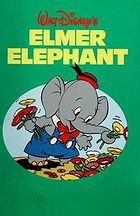 Posted : 11 years, 9 months ago on 21 July 2013 09:33
(A review of Elmer Elephant (1936))
Posted : 11 years, 9 months ago on 21 July 2013 09:33
(A review of Elmer Elephant (1936))"Elmer Elephant" is almost oppressively cutesy, a trip through the jungles of African with anthropomorphic animals celebrating a birthday party for a tigress named Tillie. When she shows an interest and kindness towards Elmer, that leads to jealous amongst the rest of guests who torture him for being an "Other." This moment is particularly questionable since the guests seem to not include two of any animal - there's a fox, a bear, a hippo, a monkey and a cheetah. No matter, it's cute enough and lands its jokes well enough. But it's just all so light-weight. It's a decent enough entry in the Silly Symphony canon, but it's nowhere near the heavyweight that other cartoons under that banner are. Still, there are worse ways to spend roughly nine minutes.
 0 comments, Reply to this entry
0 comments, Reply to this entry
Three Blind Mouseketeers
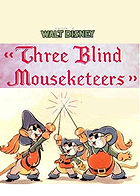 Posted : 11 years, 9 months ago on 21 July 2013 09:16
(A review of Three Blind Mouseketeers)
Posted : 11 years, 9 months ago on 21 July 2013 09:16
(A review of Three Blind Mouseketeers)"Three Blind Mouseketeers" combines elements of "Three Blind Mice" and The Three Musketeers into a slim but pleasing diversion. Instead of an old farmer's wife, it's a big fat cat dubbed Captain Katt that they do battle with.
This one tends to lean heavily on sight-gags and physical humor to tell its story, which is incredibly slight. In fact, there's not much to this cartoon. But it does have a few good jokes. Like a late night raid which sees the three mice manage to escape or evade all of the traps laid out for them, or when they proclaim "All for one and one for all!" before being caught by Captain Katt and screaming out "Every man for himself!" It's nothing terribly new or original, but it's just cutesy enough to be entertaining and watchable.
This one tends to lean heavily on sight-gags and physical humor to tell its story, which is incredibly slight. In fact, there's not much to this cartoon. But it does have a few good jokes. Like a late night raid which sees the three mice manage to escape or evade all of the traps laid out for them, or when they proclaim "All for one and one for all!" before being caught by Captain Katt and screaming out "Every man for himself!" It's nothing terribly new or original, but it's just cutesy enough to be entertaining and watchable.
 0 comments, Reply to this entry
0 comments, Reply to this entry
Chicken Little
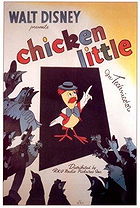 Posted : 11 years, 9 months ago on 21 July 2013 08:57
(A review of Chicken Little)
Posted : 11 years, 9 months ago on 21 July 2013 08:57
(A review of Chicken Little)"Chicken Little" takes the simplistic fable and twist it into WWII propaganda warning against the rise of Nazism. A funny cartoon could have been made of these elements, or even a reasonably entertaining one. But "Chicken Little" is loaded with problems.
Cheap animation is surely one of them. The mouth movements and vocals don't sync up fairly often. This is mainly a problem with the various barnyard denizens, but in the very last scene Foxy Loxy's mouth and voice aren't even remotely working together to make something believable.
Another is the distinct lack of jokes. Chicken Little's gullibility isn't very funny, nor is the mass hysteria that sweeps through the hen house. In fact, it's all played a little too straight yet animated as if we were supposed to be charmed and laughing at the physicality of it all. But none of it is really all that funny.
I will give this cartoon some kudos for its bleak ending. I'm surprised Uncle Walt would even allow for something so dark and depressing to be the ending to one of his cartoons. It's morbid, but it's also one of the few truly hilarious gags in the whole film. Which isn't really saying all that much.
Cheap animation is surely one of them. The mouth movements and vocals don't sync up fairly often. This is mainly a problem with the various barnyard denizens, but in the very last scene Foxy Loxy's mouth and voice aren't even remotely working together to make something believable.
Another is the distinct lack of jokes. Chicken Little's gullibility isn't very funny, nor is the mass hysteria that sweeps through the hen house. In fact, it's all played a little too straight yet animated as if we were supposed to be charmed and laughing at the physicality of it all. But none of it is really all that funny.
I will give this cartoon some kudos for its bleak ending. I'm surprised Uncle Walt would even allow for something so dark and depressing to be the ending to one of his cartoons. It's morbid, but it's also one of the few truly hilarious gags in the whole film. Which isn't really saying all that much.
 0 comments, Reply to this entry
0 comments, Reply to this entry
Lambert the Sheepish Lion
 Posted : 11 years, 9 months ago on 21 July 2013 08:45
(A review of Lambert the Sheepish Lion (1952))
Posted : 11 years, 9 months ago on 21 July 2013 08:45
(A review of Lambert the Sheepish Lion (1952))The same stork that brought about Dumbo accidentally makes a mistake in dropping off all the baby ewes. A lion named "Lambert" is mistakenly dropped off amongst the sheep, and when he tries to make good, the sheep that adopted him attacks the stork to keep Lambert as her own.
Naturally, comedic hilarity ensues as Lambert grows up to be a "sheepish" lion -- awkward, clumsy and a bit of a pushover. Of course there's a moment when he must roar, err, rise to the occasion and get in touch with his inner King of the Jungle. It's pretty formulaic, but it's so adorable to look at.
Those colors are so bold, bright and expressive that it's hard not to get hypnotized by the look of it. The animation itself is bouncy, clean and filled with personality. Disney was always great at animating with personality, and each character here, no matter how briefly seen, has its own distinct persona. That doesn't mean it's one of the best that they ever produced, but it's a solid film from beginning to end.
Naturally, comedic hilarity ensues as Lambert grows up to be a "sheepish" lion -- awkward, clumsy and a bit of a pushover. Of course there's a moment when he must roar, err, rise to the occasion and get in touch with his inner King of the Jungle. It's pretty formulaic, but it's so adorable to look at.
Those colors are so bold, bright and expressive that it's hard not to get hypnotized by the look of it. The animation itself is bouncy, clean and filled with personality. Disney was always great at animating with personality, and each character here, no matter how briefly seen, has its own distinct persona. That doesn't mean it's one of the best that they ever produced, but it's a solid film from beginning to end.
 0 comments, Reply to this entry
0 comments, Reply to this entry
Three Little Wolves
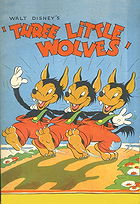 Posted : 11 years, 9 months ago on 21 July 2013 08:36
(A review of Three Little Wolves)
Posted : 11 years, 9 months ago on 21 July 2013 08:36
(A review of Three Little Wolves)And here we see the transition of the Big Bad Wolf from Depression-era troubles to Germany's impending onslaught across Europe in WWII as "Three Little Wolves" opens with Big Bad teaching his three little offspring in German. Not to mention that he sings a song about cooking and killing Fifer and Fiddler pig with his three little kids in German, "Iss Dad Nicht Ein Schnitzelbank?"
Out of the three cartoons in the trilogy of battles against Practical Pig and Big Bad, this one is certainly the darkest. Where the second one saw Red Riding Hood thrown into the mix, this one sees the two brothers play the Pigs Who Cried Wolf, Big Bad and his sons dress like Bo Peep and her lost sheep and ends with a pretty hilariously gruesome machine to beat, tar and feather the wolf. Not to mention a glimpse of battle-scarred pigs marching out of his liar as the final image we're shown.
It's a solid cartoon, just not as good as the preceding ones. Uncle Walt wisely decided that three was more than enough to move on to bigger and better ideas for his animated shorts. But these three cartoons definitely makeup some of the best that Disney has to offer.
Out of the three cartoons in the trilogy of battles against Practical Pig and Big Bad, this one is certainly the darkest. Where the second one saw Red Riding Hood thrown into the mix, this one sees the two brothers play the Pigs Who Cried Wolf, Big Bad and his sons dress like Bo Peep and her lost sheep and ends with a pretty hilariously gruesome machine to beat, tar and feather the wolf. Not to mention a glimpse of battle-scarred pigs marching out of his liar as the final image we're shown.
It's a solid cartoon, just not as good as the preceding ones. Uncle Walt wisely decided that three was more than enough to move on to bigger and better ideas for his animated shorts. But these three cartoons definitely makeup some of the best that Disney has to offer.
 0 comments, Reply to this entry
0 comments, Reply to this entry
The Big Bad Wolf
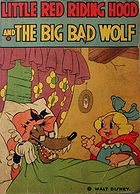 Posted : 11 years, 9 months ago on 21 July 2013 08:24
(A review of The Big Bad Wolf)
Posted : 11 years, 9 months ago on 21 July 2013 08:24
(A review of The Big Bad Wolf)A sequel of sorts, but more authentically a crossover, to "Three Little Pigs" once more sees Practical Pig save the day after his two no-good brother, Fifer and Fiddler, get Little Red Riding Hood into trouble with the Big Bad Wolf. So we have a continuation of the original storyline with the basics of Little Red Riding Hood, and this being a Disney cartoon sees all of that story's sexual subtext scrubbed clean.
But what we have left is a pretty first-rate sequel. The gags are funny, the immortal jingle of "Who's Afraid of the Big Bad Wolf?" makes a welcome return, the animation is still quite lovely and the colors continue to be lovely and inviting. So while it may not be as great as the original, it still holds up well on its own terms.
But what we have left is a pretty first-rate sequel. The gags are funny, the immortal jingle of "Who's Afraid of the Big Bad Wolf?" makes a welcome return, the animation is still quite lovely and the colors continue to be lovely and inviting. So while it may not be as great as the original, it still holds up well on its own terms.
 0 comments, Reply to this entry
0 comments, Reply to this entry
Three Little Pigs
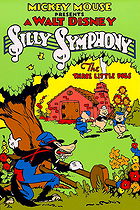 Posted : 11 years, 9 months ago on 21 July 2013 08:16
(A review of Three Little Pigs (1933))
Posted : 11 years, 9 months ago on 21 July 2013 08:16
(A review of Three Little Pigs (1933))Eighty years after premiering, "Three Little Pigs" continues to charm and be a high-water mark for the Disney studio. It tells its story through song and dance from start to finish, and while most of the music is a variation on the song "Who's Afraid of the Big Bad Wolf," what a song to spin an entire body of work out of.
The vibrant, warm colors and pleasing animation go a long way towards making the entire thing work and be the great work of art it is. But it isn't just the look and music that makes the whole thing work and continue to resonant as a goofy little cartoon. It's the clear Depression-era parable being evoked in the story. Only one brother is aware of the dangers around the corner while the other two prefer to dance, ignore the warning signs and lazily go about their frivolous existence. And the Big Bad Wolf's appearance looks like a combination of vagabond and carperbagger.
This subtext of Depression era symbolism would be further explored and built upon into an exploration of WWII imagery, with the Wolf taking on the presence of Germany and the pigs being the Allies. But the film doesn't play out quite so seriously, it's an adorable little cartoon with moments of pitch-black humor (notice the portrait of "Father" in the third pig's home). To say it more simply, "Three Little Pigs" is a masterpiece of the form.
The vibrant, warm colors and pleasing animation go a long way towards making the entire thing work and be the great work of art it is. But it isn't just the look and music that makes the whole thing work and continue to resonant as a goofy little cartoon. It's the clear Depression-era parable being evoked in the story. Only one brother is aware of the dangers around the corner while the other two prefer to dance, ignore the warning signs and lazily go about their frivolous existence. And the Big Bad Wolf's appearance looks like a combination of vagabond and carperbagger.
This subtext of Depression era symbolism would be further explored and built upon into an exploration of WWII imagery, with the Wolf taking on the presence of Germany and the pigs being the Allies. But the film doesn't play out quite so seriously, it's an adorable little cartoon with moments of pitch-black humor (notice the portrait of "Father" in the third pig's home). To say it more simply, "Three Little Pigs" is a masterpiece of the form.
 0 comments, Reply to this entry
0 comments, Reply to this entry
Paul Bunyan
 Posted : 11 years, 9 months ago on 21 July 2013 08:27
(A review of Paul Bunyan)
Posted : 11 years, 9 months ago on 21 July 2013 08:27
(A review of Paul Bunyan)Unlike "The Saga of Windwagon Smith," it's completely understandable why this one has an extended running time. It tells all of Paul Bunyan's life story, or, rather, the Disney version of it.
"Paul Bunyan" has a cute and catchy little theme song, and a unique and individual animation style. Highly angular and prone to odd angles and impressionistic backgrounds, "Paul Bunyan" doesn't really look the rest of the Disney short films. Maybe the others in the American folklore series, but this one has a uniform style that makes it highly clear that this is all one, fully realized world.
There's not much of a dramatic arch to the film, which is fine if they had just let it be a character piece and nothing more, but the last five minutes seeks to introduce modernity and all of the technology that it breeds into the events. Of course Bunyan is beaten and viewed as a relic of things past, and this routine story line is trotted out for all its worth. But was it really needed in the grand scheme of the film? It worked better as episodic moments strung together by a musical refrain.
"Paul Bunyan" is smart enough not to develop Bunyan as an individualized personality, instead relying upon the anecdotes given by various people who knew him at different stages in his life. It's a nice tip of the hat to how the myth of Bunyan came about and works to remind us of perceptions of people and events. If the film had continued to follow along that path and removed the needless swerve into a different lane it would have easily ranked among the greatest of Disney's animated shorts.
"Paul Bunyan" has a cute and catchy little theme song, and a unique and individual animation style. Highly angular and prone to odd angles and impressionistic backgrounds, "Paul Bunyan" doesn't really look the rest of the Disney short films. Maybe the others in the American folklore series, but this one has a uniform style that makes it highly clear that this is all one, fully realized world.
There's not much of a dramatic arch to the film, which is fine if they had just let it be a character piece and nothing more, but the last five minutes seeks to introduce modernity and all of the technology that it breeds into the events. Of course Bunyan is beaten and viewed as a relic of things past, and this routine story line is trotted out for all its worth. But was it really needed in the grand scheme of the film? It worked better as episodic moments strung together by a musical refrain.
"Paul Bunyan" is smart enough not to develop Bunyan as an individualized personality, instead relying upon the anecdotes given by various people who knew him at different stages in his life. It's a nice tip of the hat to how the myth of Bunyan came about and works to remind us of perceptions of people and events. If the film had continued to follow along that path and removed the needless swerve into a different lane it would have easily ranked among the greatest of Disney's animated shorts.
 0 comments, Reply to this entry
0 comments, Reply to this entry
 Login
Login
 Home
Home 95 Lists
95 Lists 1531 Reviews
1531 Reviews Collections
Collections